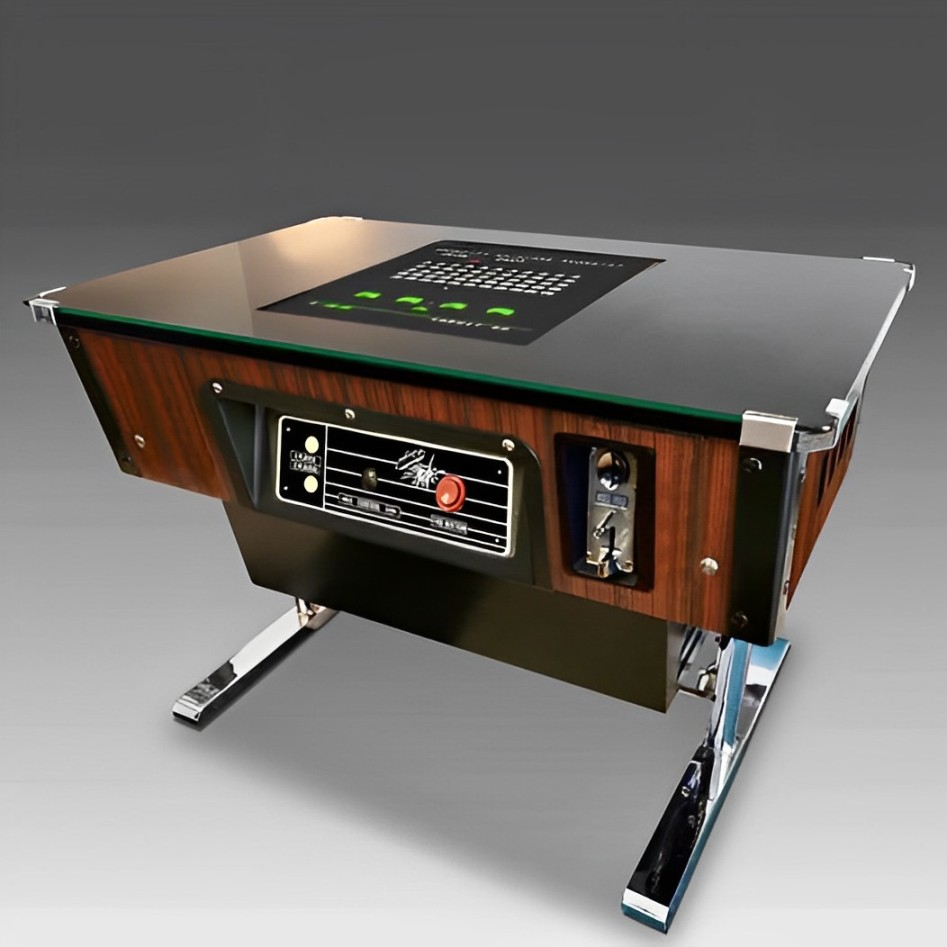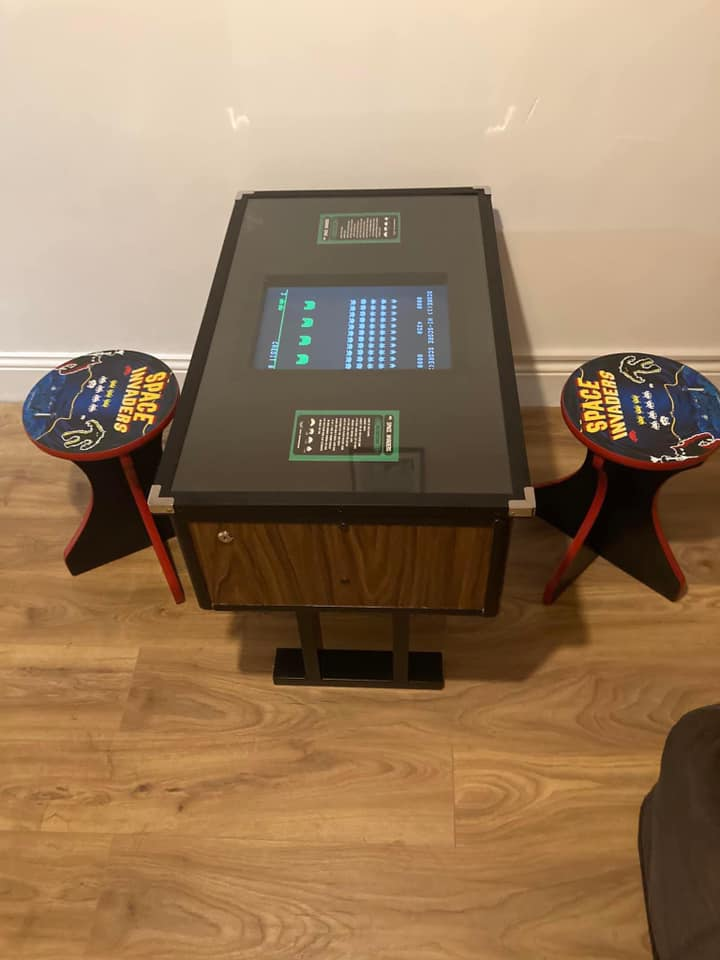Few video games have had the lasting impact of Space Invaders. Released in 1978 by Taito, this Japanese shooting game not only became an instant hit but also helped transform the video game industry from a niche curiosity into a global cultural phenomenon. Created by Tomohiro Nishikado, Space Invaders remains a defining icon of gaming history, inspiring countless titles and developers across decades.
Let’s dive into the origins, gameplay, cultural impact, and enduring legacy of this revolutionary game.

The Birth of a Gaming Legend
Developed by Tomohiro Nishikado, Space Invaders was inspired by various sources, including Breakout, The War of the Worlds, and Star Wars. Nishikado envisioned a game where players would defend Earth from alien invaders, but the concept almost took a very different turn. Originally, the enemies were designed to be human soldiers. However, fearing backlash over promoting violence against humans, Taito replaced the enemies with pixelated aliens.
This decision not only avoided controversy but also introduced a unique sci-fi theme that resonated with players and helped cement the game’s iconic status.
Gameplay: A Simple Yet Addictive Formula
At its core, Space Invaders is a straightforward 2D shooter. Players control a lone human spaceship tasked with defending Earth from waves of advancing alien invaders.
Key Gameplay Elements:
- Alien Waves: Each stage features 48 aliens, organized into six columns. These enemies move side-to-side in a predictable pattern, gradually descending toward the player.
- Player’s Goal: Shoot all 48 aliens before they reach the Earth.
- Random Alien Fire: Aliens fire shots at random intervals, adding an element of unpredictability.
- Shields for Defense: The player has three shields to hide behind, but these deteriorate as they absorb enemy fire.
- Advancing Difficulty: Once all aliens are destroyed, the player progresses to the next stage, facing a faster and more aggressive wave of enemies.
This simple yet challenging gameplay loop kept players engaged, pushing them to beat their high scores and test their reflexes.
The Golden Age of Arcades
When Space Invaders launched, it became an instant sensation. Arcades filled with eager players lining up for a chance to defend Earth from pixelated extraterrestrials. The game’s popularity marked the beginning of the golden age of arcade gaming, a period that saw explosive growth in the industry.
A Record-Breaking Success:
- Within two years of its release, Space Invaders had been licensed for the U.S. market and adapted for platforms like the Atari 2600.
- By 1980, it was generating over $500 million in revenue, a staggering achievement for the time.
- The Atari VCS version became the console’s first “killer app,” quadrupling its sales and solidifying the home gaming market.
Cultural Impact and Iconic Status
Space Invaders didn’t just change the gaming industry—it became a cultural icon. The pixelated alien enemies, once the bane of players’ existence, are now universally recognized symbols of gaming culture.
Pop Culture Influence:
- Symbol of Gaming: The alien sprites have appeared in movies, merchandise, and even public art, representing video games as a whole.
- Merchandising Boom: From T-shirts to toys, the Space Invaders brand expanded far beyond the arcade cabinet.
- Global Phenomenon: Its success paved the way for gaming to become a worldwide industry, inspiring countless games across genres.
Evolution and Sequels
As gaming technology evolved, so did Space Invaders. The game has been updated, ported, and re-released on numerous platforms over the years, often incorporating new features while staying true to its roots.
Notable Sequels and Updates:
- Power-Ups: Later versions introduced mechanics like power-ups to enhance gameplay.
- 3D Graphics: Sequels like Space Invaders Infinity Gene added three-dimensional playing fields and bosses, modernizing the classic formula.
- Rhythm-Action Gameplay: Some updates combined the shooting mechanics with music-based gameplay, appealing to a new generation of players.
Despite these changes, the original’s simplicity and charm remain timeless.

Why Space Invaders Was Revolutionary
So, what made Space Invaders such a groundbreaking game?
1. Endless Replayability:
The escalating difficulty of Space Invaders created a compelling challenge that kept players coming back for more. Its focus on achieving high scores helped popularize competitive gaming in arcades.
2. Strategic Gameplay:
Unlike many earlier games, Space Invaders required a mix of reflexes and strategy. Players had to time their shots carefully, dodge enemy fire, and decide when to hide behind shields or go on the offensive.
3. Technical Innovation:
The game introduced a unique quirk: as players eliminated more aliens, the remaining enemies moved faster due to reduced processing load on the hardware. This accidental feature became a core part of the game’s thrilling pace.
4. Ushering in the Console Era:
Its success on platforms like the Atari VCS demonstrated the potential of home gaming, transforming video games from an arcade novelty to a household staple.
Lessons Learned from Space Invaders
Even decades later, Space Invaders offers valuable lessons for game developers and players alike.
1. Simplicity Works:
The game’s straightforward mechanics proved that you don’t need complex systems to create an engaging experience.
2. Iteration Is Key:
Over the years, Space Invaders has evolved while staying true to its original appeal, showing the power of adapting to new technologies and audiences.
3. Cultural Resonance Matters:
By tapping into universal themes like alien invasions, the game captured the imagination of players worldwide.
The Enduring Legacy of Space Invaders
More than 40 years after its release, Space Invaders remains a beloved classic that continues to inspire. It’s not just a game—it’s a symbol of gaming’s potential to entertain, innovate, and connect people.
Whether you’re a veteran player reminiscing about the golden age of arcades or a newcomer discovering retro games for the first time, Space Invaders offers a timeless experience that’s as thrilling today as it was in 1978.
The game’s legacy lives on in modern shooters, pixel art, and the very culture of gaming itself. It’s a reminder that even the simplest ideas can have a monumental impact.
Conclusion: The Game That Defined an Era
Space Invaders wasn’t just a video game; it was a revolution. From its iconic alien sprites to its addictive gameplay, it shaped the future of gaming and left an indelible mark on pop culture. As players continue to rediscover this classic on modern platforms, its enduring appeal proves that sometimes, the simplest battles—like protecting Earth from invading aliens—are the most memorable.
So, the next time you see a pixelated alien, take a moment to appreciate the game that started it all. Space Invaders didn’t just invade arcades—it invaded our hearts, and it’s here to stay.


